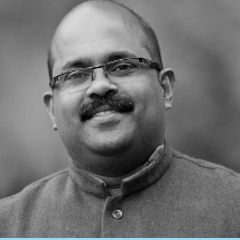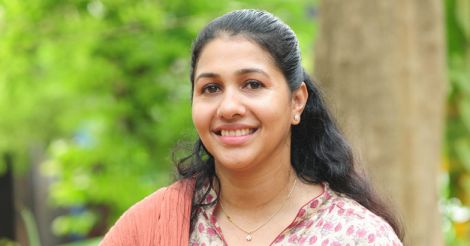For Olympian Anju Bobby George, caught in a controversy over the allegations of corruption in the Kerala sports council of which she is a member, this is dividend season. The media reportage of the controversy is a fine case study of how efforts sunk in cultivating media relations can pay off handsomely – even after years.
Anju was definitely not the best athlete Kerala has produced so far. But she was an athlete who put a lot of effort into managing her public image through intense media relations efforts. Anju's sports career peaked at a time when print and satellite TV channels dominated the news dissemination scene; the Internet was yet to gain critical mass as a news medium, at least in Kerala at that time. She won the Arjuna award and was conferred the Padma Shri before Mark Zuckerberg launched Facebook, where most people consume most of their news today. The news organizations of that time pretty much had a captive readership, unchallenged by competition that could offer a different and more rational mix of news/programs.
Keralites always loved their news and newspapers and Anju had developed a strong offline fan-base by creative use of the media – carefully planting her profiles, news of her successes, and other positive stories related to her sports life in news media. Readers and TV viewers from that era would remember that Anju got way more coverage than her sports successes would have warranted.
If it was a good day for Anju, the news organizations would fill their space and airwaves with stories of the hard work that brought her the success. If it was a poor performance she turned in, Anju and husband Bobby would was always be there to convincingly explain the various reasons for that: an injury (Sydney Olympics, 2000), a fever (Athens Olympics, 2004), an ankle injury (Beijing Olympics, 2008), an upper respiratory tract infection (52nd national inter-state athletics, 2012), a neck injury before practice (Sollentuna GP in Stockholm and Portugese National championship, Portugal, 2012), or some similar spin. The media, or rather the reporters and editors who had been carefully cultivated, lapped all those up – no questions asked. These spins kept the fans from getting disappointed and nurtured their hopes of a better “next time”, ensuring they stayed loyal fans and loyal readers.
No athlete at that time could command such disproportionate and fawning media attention. It is common for athletes to suffer from injuries, often during the course of their training. But Anju’s injuries always made headlines, especially when she failed in her jumps. Sports-page readers were treated to in-depth explanations of her injuries by Anju and her coach Bobby. Even when she was not in form or had no chance of winning a medal, media raised the expectations of her fans and readers by belting out stories about her preparations.
No one, for example, ever questioned how Anju, who had turned 35 and had added body mass, could qualify for the 2012 London Olympics by clearing the 6.55m-qualifying mark. It was like the coverage often reserved by national media for Indian cricketers, which, of course, was justified by their popular following, and the money involved in the sports.
Anju had all three major factors required for a good and sustainable media presence: caliber, glamour and well-honed PR tactics. So, sports-loving Keralites were served up heavy reportage on Anju almost every day — reportage that was a treat to the eyes and mind and the envy of any PR professional – complete with great photographs (thanks to digital photography) and a well-prepared story package. Anju herself shared to journalists interesting bits of information, such as how she ensured that the Mother Mary's figurine worn around her neck is not hidden by her track suit, how she wore track suits with her lucky colors, and even minute details of her kit; information that was lapped up and regurgitated to satiate a fan following built up through precisely such coverage.
That is why I think comrade E.P. Jayarajan, Kerala's sports minister, got a raw deal in this controversy. The reporters and editors who were cultivated by Anju once have gone hammer and tongs at him, without even bothering to take a deeper look at the alleged irregularities in the sports council as well as in the appointment of Anju's brother in the body. The media space that Anju got can be tied back to those days of savvy media cultivation when Anju was a competing athlete.
Dear minister, today people love to believe that you humiliated Anju in your office. And the online trolling you were subjected to as the controversy raged, was not always the work of Internet-savvy BJP and Congress workers. The fans of Anju from yesteryears had a major role to play, too. This controversy has even overshadowed your foot-in-the-mouth comment on boxing great Mohammed Ali (granted it was not entirely your fault). You should thank Congress leader K. Sudhakaran for helping divert at least some of these trolls from focusing on you. Don't underestimate their social media power.
It was Anju who met the media first, right after meeting the chief minister on the issue. And the media started carrying her version before even cross-checking with you. Of course, your version was carried, but more like an afterthought. Don't dismiss it as a conspiracy of the bourgeoisie media; it is simply media savvy paying dividends. It is great public relations paying off in times of a crisis – for Anju.
This controversy and the media coverage surrounding it, whatever the facts are, just shows that in today's world, hard work alone is not enough, especially in public-facing professions. One who works hard and also boosts his/her image through strategic PR efforts will definitely have an edge over another person who works equally hard but is sloppy about cultivating the media. Singer Yesudas is another good example of this of hard work plus media savvy.
And that also explains the case of Saina Nehwal, India's ace badminton player, who is less than impressive as far as deliberate media relations efforts are concerned. So she gets coverage that is just proportionate to her calibre, sans the headlines screaming about her injuries. And we do not know about her belief system, life, hobbies... anything. In Nehwal’s case it is only sports, no games! Still think it should be like that?
(The author is a development communication professional based in Delhi and an avid reader of sports pages since his childhood. The views expressed are personal.)

























